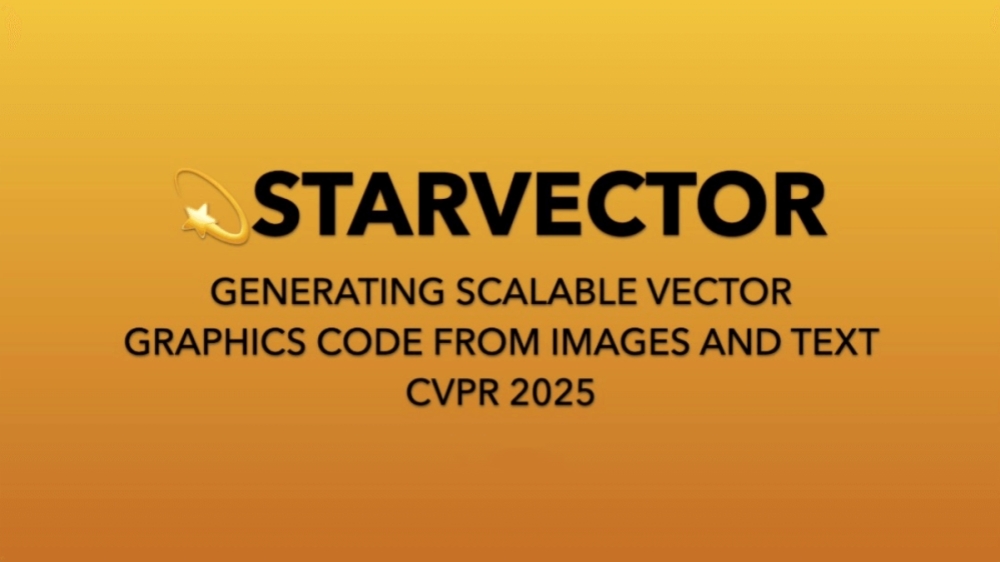StarVector is an open source multimodal visual language model jointly developed by ServiceNow Research , Mila – Quebec AI Institute and ETS Montreal . It focuses on converting images and text into Scalable Vector Graphics (SVG) code. StarVector can process image and text information simultaneously, operate in the SVG code space, and directly generate standard and editable SVG files.
The model is trained on an SVG-Stack dataset containing more than 2 million SVG samples, and provides two scales: StarVector -1B and StarVector -8B to meet different needs.

1. Image-to-SVG conversion (Image-to-SVG):It can directly convert the image into SVG code to realize vectorization of the image.
2. Text-to-SVG generation (Text-to-SVG):Generate corresponding SVG graphics based on text instructions.
1. Multimodal architecture
StarVector uses a multimodal architecture to seamlessly integrate visual and language models. A visual encoder (such as Vision Transformer or CLIP image encoder) extracts image features, and then maps these features to the embed space of the language model through an adapter, generates visual markers, and ultimately generates SVG code.
2. Image encoding and visual mark generation
The image encoder segments the image into small pieces and converts it into hidden features, and then projects it into the embedding space of the language model through the adapter to generate visual markers and capture the key visual features of the image.
3. Language model and SVG code generation
Based on the StarCoder language model, StarVector supervises the learning by predicting the next SVG code mark during training, and inference stage generates SVG code based on the visual marks of the input image.
4. Large-scale dataset training
Training on an SVG-Stack dataset containing more than 2 million SVG samples supports multiple tasks for image-to-SVG and text-to-SVG. Introduce SVG-Bench benchmarks to comprehensively evaluate model performance.
5. Performance advantages
StarVector performs excellently in image to SVG and text to SVG tasks, and the generated SVG files are more compact and have richer semantics, effectively utilizing SVG primitives.
Official website : StarVector official website
Github repository : StarVector Github
arXiv technical paper : StarVector paper
1. Icon generation:Quickly generate SVG icons based on text description or image input, suitable for web navigation bars, buttons, etc.
2. Art creation:Artists can transform creative sketches or text descriptions into vector artworks for easier subsequent editing.
3. Animation production:The generated SVG graphics can be used as the basic element of animation production and further developed into dynamic effects.
4. Programming Education:Students can learn the generation and editing of SVG code through StarVector to improve their programming and graphic design abilities.
5. Technical chart generation:Generate technical charts based on text descriptions, such as flow charts, structural charts, etc., for engineering documents and technical descriptions.
6. Data visualization:Visualize data as SVG graphics, which is convenient for display on web pages or reports, while maintaining the editability and scalability of the graphics.